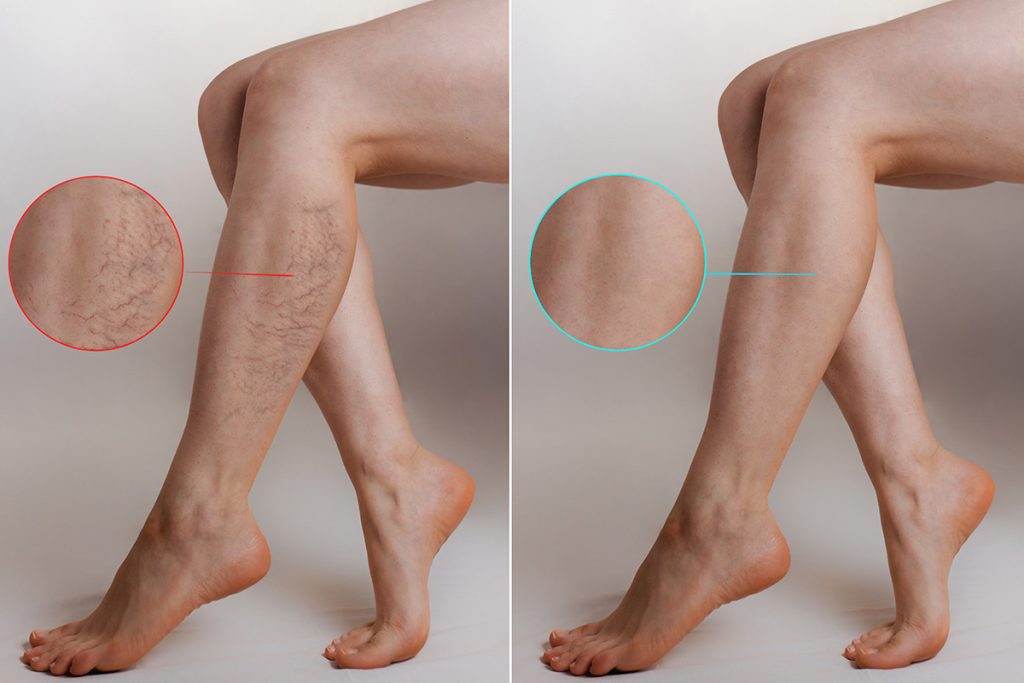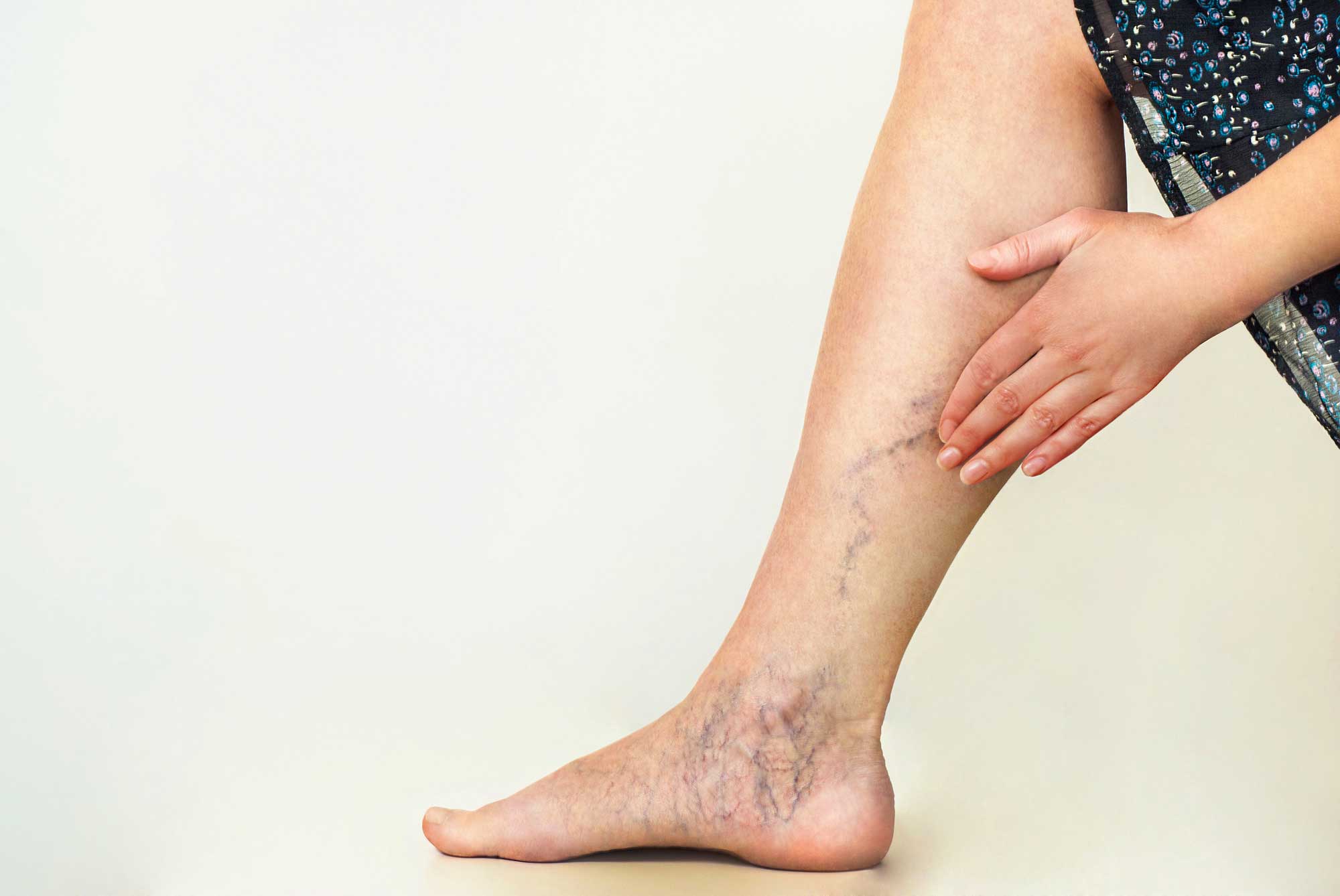Did you know that nearly 30% of adults experience some form of venous disease, including venous varicosities affecting large veins and limb veins? Sclerotherapy treatment is a popular solution for those struggling with venous varicosities, varicose and spider veins, and vessel issues. This minimally invasive procedure involves injecting a special solution directly into the affected veins, specifically targeting venous varicosities, causing them to collapse and fade away after several sclerotherapy treatments.
Patients often seek sclerotherapy not just for cosmetic reasons related to spider leg veins and large veins but also to relieve discomfort associated with varicose vein treatment and spider vein conditions. The therapy process for spider vein treatment is quick, typically requiring only a few sessions, making it an appealing option for busy individuals. Understanding the benefits and details of sclerotherapy can help you make an informed decision about your vein health.
Purpose of Sclerotherapy
Treat Veins
Sclerotherapy effectively treats varicose and spider veins. This therapy procedure involves injecting a solution directly into the affected veins. The therapy solution irritates the vein lining, causing it to collapse and seal shut. Over time, the body absorbs the treated vein through therapy, making it disappear.
This treatment is often preferred for its simplicity. Patients can typically return to their daily activities and therapy shortly after the procedure. Many find that sclerotherapy provides noticeable results within weeks. For those suffering from unsightly veins, this therapy option offers a way to regain confidence.
Improve Appearance
Sclerotherapy improves the appearance of affected skin areas. Varicose and spider veins can be embarrassing for many people, but therapy can help. Their presence may lead to self-consciousness, especially in warmer months when wearing shorts or swimsuits is common therapy.
After undergoing sclerotherapy, patients often report smoother skin with fewer visible veins. This change can significantly impact one’s self-esteem. Improved appearance through therapy encourages individuals to engage more in social activities without fear of judgment.
Alleviate Symptoms
Sclerotherapy also alleviates symptoms associated with varicose veins, such as pain and swelling. Many individuals experience discomfort from these veins, including aching, heaviness, and fatigue in the legs.
The treatment helps reduce these symptoms by closing off problematic veins. As blood flow redirects to healthier veins, patients often notice relief from discomfort. Reduced swelling improves overall leg health and function, allowing for a more active lifestyle.
Patients should discuss their symptoms and treatment goals with healthcare providers before proceeding. Understanding individual needs ensures tailored care for each person.
Additional Benefits
Beyond cosmetic improvements and symptom relief, sclerotherapy has other benefits. It is a minimally invasive procedure with few risks compared to surgery. Most patients do not require anesthesia, which simplifies the process further.
Recovery is typically quick, allowing individuals to resume normal activities soon after treatment. Some may experience mild side effects like bruising or redness at injection sites, but these usually resolve quickly.
Benefits for Varicose Veins
Reduced Visibility
Sclerotherapy is effective in treating varicose veins. It reduces the appearance of unsightly veins. The treatment involves injecting a solution into the problematic veins. This solution causes the veins to collapse and fade over time. Many patients notice a significant reduction in visible veins after just one session.
Spider veins and larger veins can also be treated effectively. Patients often feel more confident wearing shorts or skirts after treatment. The improvement in appearance can lead to increased self-esteem. Many people report feeling happier with their legs post-treatment.
Minimized Discomfort
Discomfort and pain are common issues for those with venous disorders. Sclerotherapy helps alleviate these symptoms. By closing off the affected veins, it reduces pressure on surrounding tissues. This leads to less swelling and discomfort in the legs.
Patients often describe a sense of relief after undergoing sclerotherapy. They experience fewer aches and pains associated with venous insufficiency. This treatment allows many individuals to return to daily activities without discomfort.
Prevention of Complications
Sclerotherapy not only treats existing varicose veins but also prevents future complications. Untreated varicose veins can lead to serious issues like ulcers or blood clots. By addressing the problem early, patients can avoid these risks.
The procedure helps improve blood flow by ensuring that vein valves function correctly. This reduces the chance of developing new problematic veins. Regular follow-up treatments may further decrease the likelihood of complications.
Long-lasting Results
Patients often enjoy long-lasting results from sclerotherapy. Many report that treated veins do not return, especially when following aftercare instructions. Maintaining a healthy lifestyle can also support these results.
In some cases, new spider leg veins may appear over time, but they can be treated again with sclerotherapy. Regular check-ups with a healthcare provider can help monitor vein health.
Cost-effective Solution
Sclerotherapy is often considered a cost-effective option compared to other treatments like vein stripping. Patients typically find that sclerotherapy requires fewer sessions than expected for satisfactory results.
Insurance may cover part of the treatment if deemed medically necessary due to pain or discomfort. This makes it an accessible option for many seeking relief from venous problems.
Preparing for Treatment
Consultation
Patients must consult with a healthcare provider before beginning sclerotherapy treatment. This step is crucial to assess individual suitability for the procedure. The doctor will evaluate the patient’s medical history and any existing conditions. They will also discuss the specific goals of the therapy.
During this consultation, the doctor may ask about previous treatments or surgeries. Understanding any past procedures helps in planning the current treatment. Patients should be open about their health and any medications they take. This honesty ensures a safer experience during the injection process.
Medication Management
Certain medications can increase the risk of bleeding during sclerotherapy. Doctors often advise patients to avoid these medications before treatment. Common drugs to avoid include aspirin and other blood thinners. These can interfere with blood flow and complicate the injection site healing.
Patients should also inform their doctor about all supplements they are taking. Some herbal supplements can have similar effects as blood thinners. Examples include ginkgo biloba and garlic supplements. It’s essential to follow medical advice regarding medication management leading up to the procedure.
Day of Procedure
On the day of the sclerotherapy procedure, patients should wear loose, comfortable clothing. This choice allows easy access to the injection site without causing discomfort. Tight clothing can restrict movement and may make it harder for the surgeon to work effectively.
Before entering the treatment room, patients might undergo a brief assessment again. The doctor will confirm the areas that need injections and explain what to expect during therapy. Understanding the process helps reduce anxiety and prepares patients mentally.
Injection Process
The injection itself involves a needle that delivers a solution into the targeted veins. This solution causes irritation in the vein walls, leading to their closure over time. Blood flow then reroutes through healthier veins, improving circulation.
Surgeons often use ultrasound guidance during this procedure for accuracy. This technology ensures precise targeting of problematic veins, minimizing damage to surrounding tissues. Patients may feel some discomfort during injections but usually tolerate it well.
Post-Treatment Care
After treatment, patients receive specific aftercare instructions from their doctor. These guidelines help ensure proper healing at the injection sites. Patients might be advised to wear compression stockings for several days post-procedure. Compression aids in reducing swelling and promotes better blood flow.
Monitoring for any unusual reactions is important after leaving the clinic. If symptoms like excessive pain or swelling occur, contacting a healthcare provider is necessary.
Sclerotherapy Procedure Overview
Injection Process
During a sclerotherapy procedure, a dermatologist injects a chemical solution directly into the targeted vein. This solution is typically a sclerosant, which irritates the lining of the blood vessel.
The injected sclerosant causes the vein walls to swell. As a result, the walls stick together and seal shut. This process effectively closes off the problematic vein.
No Anesthesia Required
The sclerotherapy treatment usually occurs in an office setting. Patients generally do not require anesthesia for this procedure. The injections may cause mild discomfort, but most people tolerate it well.
Dermatologists often use gentle techniques to minimize pain during injection sclerotherapy. They may apply ice or use a small needle to reduce discomfort.
Vein Size Matters
The effectiveness of various sclerotherapy techniques can depend on the size of the vessels being treated. Smaller veins often respond better to single sclerotherapy procedures. Larger veins may require several sclerotherapy treatments for optimal results.
Patients should discuss their specific conditions with their dermatologist. Understanding the size and type of vessels involved will help in planning the treatment.
Treatment Outcomes
After injection sclerotherapy, patients may notice changes in their veins over time. The treated vessels often fade and become less visible within weeks to months.
Most individuals see positive injection sclerotherapy outcomes after completing their sessions. Some might need follow-up treatments for best results.
Post-Procedure Care
Following the procedure, dermatologists recommend wearing compression stockings. These help support the treated area and improve circulation. Patients should also avoid strenuous activities for a few days post-treatment.
Monitoring for side effects is important after sclerotherapy treatment. Common side effects may include bruising or swelling at the injection site. These symptoms typically resolve without intervention.
What to Expect During Treatment
Preparation Steps
Patients will lie on their backs with legs slightly elevated. This position helps improve blood flow during the procedure. It also ensures that the doctor has a clear view of the veins being treated. Proper positioning is crucial for effective sclerotherapy.
Injection Experience
Most patients experience minimal discomfort from fine needle injections. The needles used are very thin, which reduces pain during insertion. Some may feel a slight sting, but this usually lasts just a moment. After the injection, patients might notice some swelling or bruising in the treated area. These effects are normal and typically resolve within a few days.
Post-Treatment Care
After the injections, compression and massage of the treated area occur. Compression helps prevent blood from flowing back into the veins that were treated. This action enhances the results of the treatment. Patients often wear compression stockings for several days following the procedure.
Massage can help distribute the solution evenly within the vein. This technique may also reduce any discomfort or swelling experienced after treatment. Doctors often provide specific instructions about how long to wear compression garments.
Treatment Results
Results vary from person to person. Most patients see significant improvement in their symptoms within weeks. The veins may appear less visible as they gradually fade away. Full results can take several months to become evident, depending on individual healing rates.
e patients require multiple sessions to achieve desired outcomes. Each session targets specific areas and builds upon previous treatments. Regular follow-ups with healthcare providers ensure that progress is monitored effectively.
Potential Side Effects
While sclerotherapy is generally safe, some side effects can occur. Common side effects include bruising, redness, and swelling at injection sites. These usually disappear within a few days but should be reported if they persist longer than expected.
Rarely, more serious complications may arise. These can include allergic reactions or blood clots. Patients must inform their doctors about any unusual symptoms after treatment.
Long-Term Considerations
Long-term results depend on lifestyle choices and overall health. Maintaining a healthy weight and staying active can support vein health post-treatment. Avoiding long periods of sitting or standing can also help prevent new varicose veins from forming.
Regular check-ups allow doctors to monitor vein health over time. They can provide additional treatments if necessary.
Post-Treatment Care
Walking
Walking is essential after sclerotherapy. It helps improve blood circulation and reduces the risk of blood clots. Patients should walk around for at least 30 minutes each day. This activity encourages blood flow in the legs, which is crucial for healing.
Doctors often recommend walking immediately after the procedure. This simple action can make a big difference in recovery time. It is important to avoid sitting or standing still for long periods. Regular movement can significantly enhance the treatment’s effectiveness.
Normal Activities
Most patients can return to normal activities the same day as their sclerotherapy treatment. Light activities are encouraged, but high-impact exercises should be avoided for a few days. This includes running or heavy lifting.
Patients should listen to their bodies during this period. If any discomfort arises, it’s best to take a break. Resting allows the body to heal properly without unnecessary strain. Following these guidelines helps ensure a smoother recovery process.
Specific Instructions
Following specific post-treatment instructions is crucial for optimal results. Avoid sun exposure to the treated areas for several weeks. Sunlight can cause pigmentation changes on the skin, which may lead to unwanted results.
Wearing compression stockings is another vital step in post-care. These stockings help maintain pressure on the treated veins, promoting better healing. Patients typically wear them for about one week after treatment.
Compression stockings should fit snugly but not too tight. They help reduce swelling and support blood flow in the legs. Many doctors provide guidelines on how long to wear them each day.

Monitoring Symptoms
Patients need to monitor their symptoms after treatment closely. Some swelling and bruising are normal and usually resolve within a few days. However, if symptoms worsen or new issues arise, contacting a healthcare provider is important.
Signs such as severe pain, redness, or warmth in the treated area could indicate complications. Quick action can prevent more serious health problems later on. Being proactive about these symptoms ensures safety and well-being.
Follow-Up Appointments
Follow-up appointments play a critical role in post-treatment care. Doctors assess recovery progress during these visits. They check for any signs of complications and determine if further treatment is needed.
Patients should keep track of their appointment schedule and attend all follow-ups as recommended. These sessions allow healthcare providers to address any concerns and adjust care plans accordingly.
Recovery Guidelines
Monitor Symptoms
After sclerotherapy treatment, it’s crucial to monitor for unusual symptoms. Common side effects include swelling, bruising, or mild pain at the injection site. However, if you notice severe pain, significant swelling, or discoloration, contact your healthcare provider immediately.
Monitor for any signs of allergic reactions. Symptoms may include rash, itching, or difficulty breathing. These require immediate medical attention. Keeping an eye on these symptoms helps ensure a smooth recovery.
Follow-Up Appointments
Schedule follow-up appointments as recommended by your doctor. Typically, these occur within a few weeks after treatment. During these visits, your doctor will assess the treated areas and determine if further sessions are necessary.
Regular check-ups allow for adjustments in your recovery plan. They help track progress and address any concerns that arise. Consistent communication with your healthcare provider is vital for effective recovery.
Healthy Lifestyle Choices
Maintain a healthy lifestyle to support vein health during recovery. Focus on a balanced diet rich in fruits, vegetables, and whole grains. Proper nutrition aids in healing and overall well-being.
Incorporate regular physical activity into your routine. Walking is particularly beneficial as it promotes blood circulation without straining the veins. Aim for at least 30 minutes of moderate exercise most days of the week.
Stay hydrated by drinking plenty of water. Hydration helps maintain blood volume and supports circulation. Avoid long periods of sitting or standing to reduce pressure on your veins.
Compression Garments
Wear compression garments as directed by your healthcare provider. These garments help improve blood flow and reduce swelling in the treated areas. They should be snug but not too tight.
Follow specific instructions regarding when to wear them and how long to keep them on each day. Consistent use can significantly enhance recovery outcomes.
Avoid Strenuous Activities
Avoid strenuous activities or heavy lifting for at least two weeks post-treatment. High-impact exercises can strain the veins and hinder recovery. Listen to your body and rest as needed.
If you experience discomfort while engaging in any activity, stop immediately. Gradually reintroduce more intense workouts as advised by your doctor.
Emotional Support
Recovery can be an emotional journey for some individuals. Seek support from friends or family if feelings of anxiety or stress arise during this time. Sharing experiences can provide comfort and encouragement.
Consider joining support groups where you can connect with others who have undergone similar treatments. This community can offer valuable insights and coping strategies.
Managing Side Effects
Injection Pain
Expect temporary stinging or pain at injection sites. This discomfort usually lasts for a few minutes after the procedure. Most patients describe it as mild and manageable. Applying ice to the area may help reduce any pain.
e people experience soreness in the treated areas for a day or two. This is normal and should gradually improve. If pain persists beyond this timeframe, consult your healthcare provider.
Swelling and Bruising
Be aware of potential swelling, bruising, or red raised areas following sclerotherapy treatment. These effects can occur as the body reacts to the injected solution. Bruising is common and can last from a few days to several weeks.
Swelling may happen immediately or develop over time. It often resolves on its own. However, if swelling increases or becomes painful, contact your doctor for advice.
Allergic Reactions
Monitor for any signs of an allergic reaction after treatment. Symptoms may include rash, itching, or difficulty breathing. These reactions are rare but can occur with any medical procedure.
If you notice these symptoms, seek immediate medical attention. Your safety is crucial, and prompt action can prevent serious complications.
Reporting Side Effects
Report any severe or persistent side effects to your healthcare provider. Keeping an open line of communication helps manage any issues effectively. Documenting your symptoms will provide valuable information during follow-up visits.
Your doctor may suggest adjustments to your recovery plan based on your feedback. They may also provide additional guidance on managing side effects.
Recovery Timeline
Most side effects improve within a few days to weeks. Understanding this timeline can help set realistic expectations. Regular check-ins with your healthcare provider will ensure that your recovery proceeds smoothly.
Follow their recommendations closely for best results. Avoid strenuous activities until cleared by your doctor to minimize complications.
Potential Risks and Complications
Allergic Reactions
Allergic reactions to the sclerosing solution are possible. These reactions can vary from mild to severe. Symptoms may include itching, rash, or swelling. In rare cases, anaphylaxis can occur. This serious condition requires immediate medical attention. Patients should inform their doctors about any known allergies before treatment.
Inflammation and Lumps
Inflammation in treated vessels is another potential issue. Patients may notice lumps or hard areas at the injection site. These lumps often resolve on their own over time. However, they can cause discomfort or pain during the healing process. Following post-treatment instructions can help minimize these problems.
Rare Complications
Rare complications can arise after sclerotherapy. Some patients report small, painful ulcers at the injection sites. These ulcers may take time to heal completely. Discoloration of the skin can also occur in some areas. This discoloration might appear as brown spots or patches.
Blood Clots
Blood clots are a significant risk associated with sclerotherapy. They can form in treated veins and lead to serious health issues. Symptoms of blood clots include swelling, redness, and warmth in the affected area. Immediate medical evaluation is necessary if these symptoms appear.
Compression Guidelines
Compression after treatment is crucial for reducing risks. Doctors typically recommend wearing compression stockings for several days post-procedure. These stockings help support the veins and prevent complications like blood clots. Following compression guidelines is essential for a successful recovery.
Valve Functionality
Sclerotherapy targets specific veins but may affect nearby valves as well. If these valves do not function properly after treatment, it could lead to further complications. Patients should discuss any concerns about valve functionality with their healthcare provider.
Follow-Up Instructions
Patients must adhere to follow-up instructions provided by their doctors. Regular check-ups allow healthcare providers to monitor recovery and address any emerging issues promptly. Ignoring follow-up care can increase the risk of complications.
Final Remarks
Sclerotherapy offers a reliable solution for varicose veins, enhancing your comfort and aesthetic appeal. Understanding the procedure, preparation, and recovery can empower you to make informed decisions. Post-treatment care is crucial for optimal results, and managing side effects ensures a smoother experience.
If you’re considering sclerotherapy, consult a qualified professional to discuss your options. Your journey to healthier veins starts with the right information and support. Take action today to reclaim your confidence and well-being!
Frequently Asked Questions
What is sclerotherapy?
Sclerotherapy is a medical procedure used to treat varicose and spider veins. It involves injecting a solution directly into the affected veins, causing them to collapse and fade from view.
How effective is sclerotherapy for varicose veins?
Sclerotherapy is highly effective for treating varicose veins, with many patients experiencing significant improvement after one session. Results may vary based on individual conditions and vein types.
Is sclerotherapy painful?
Most patients report minimal discomfort during sclerotherapy. The injection may cause a brief sting, but it typically subsides quickly. Local anesthesia can be used if needed for added comfort.
How long does a sclerotherapy session take?
A typical sclerotherapy session lasts between 30 minutes to an hour. The duration depends on the number of veins being treated and the complexity of the procedure.
What should I do after sclerotherapy?
After treatment, it’s essential to walk for at least 15 minutes to promote circulation. You should also avoid strenuous activities and sun exposure for a few days.
Are there any side effects of sclerotherapy?
Common side effects include bruising, swelling, and redness at the injection site. These usually resolve within a few days. Serious complications are rare but can occur.
How soon can I see results from sclerotherapy?
Patients often notice improvements within a few weeks after treatment, as the injected veins gradually fade. Full results may take several months to manifest completely.





